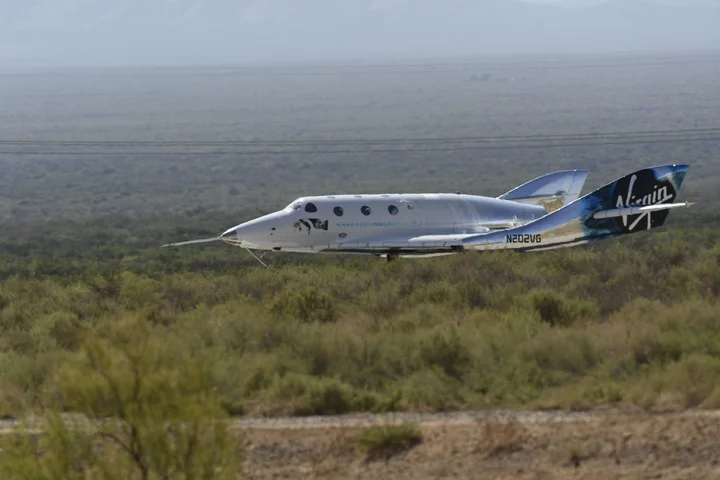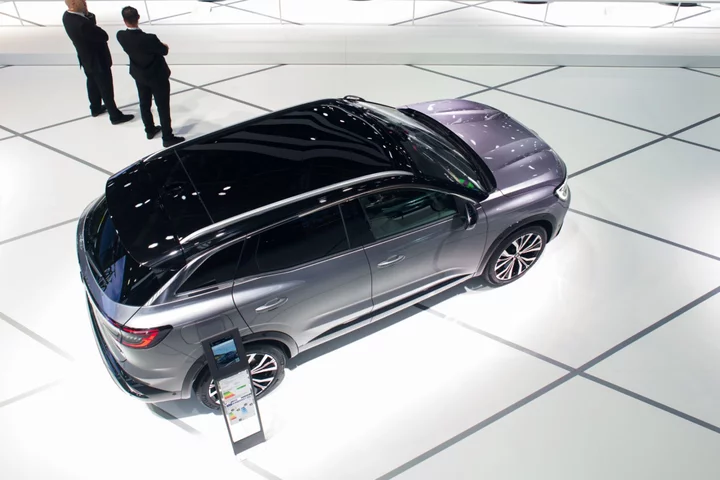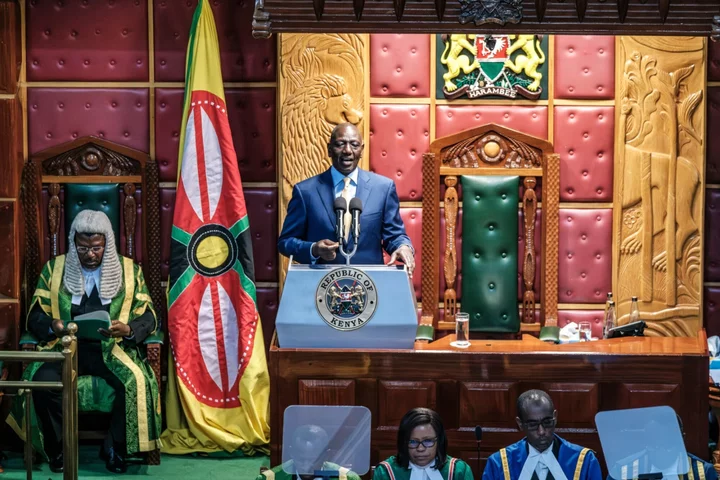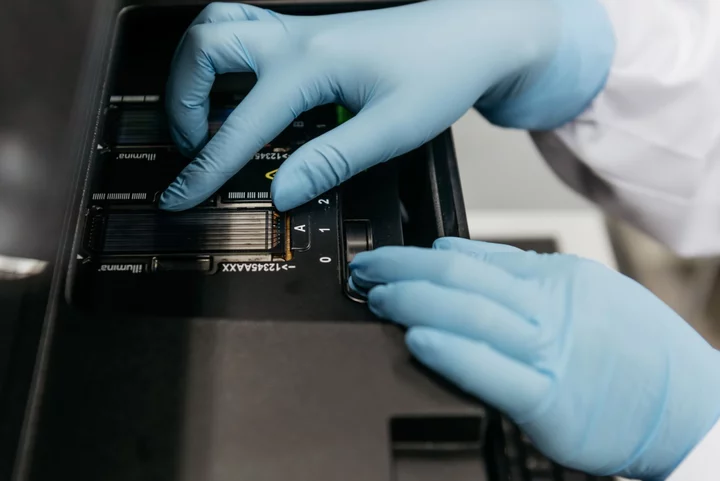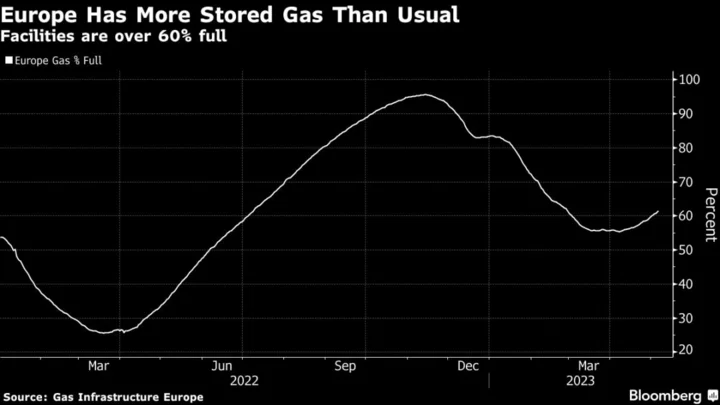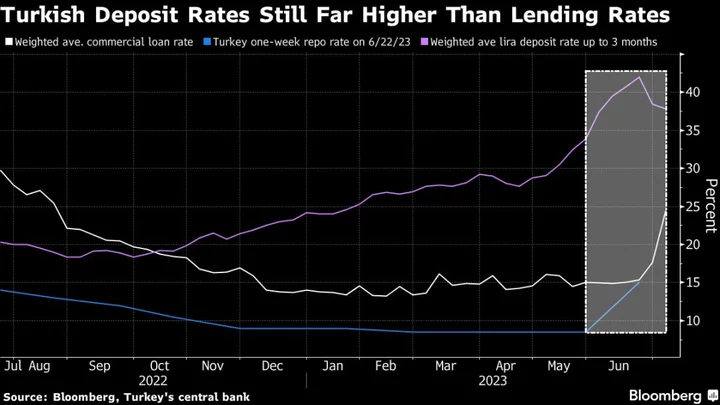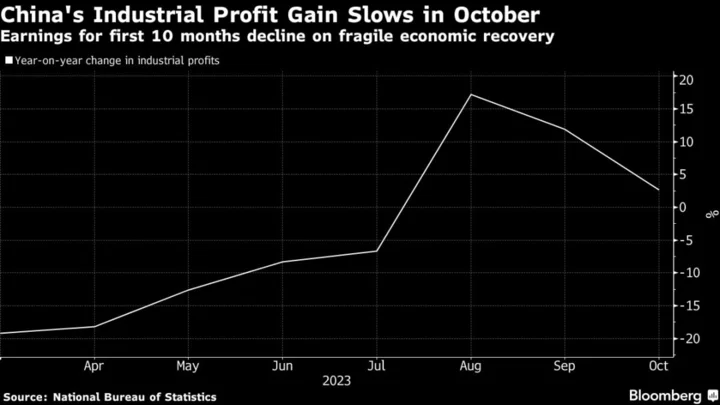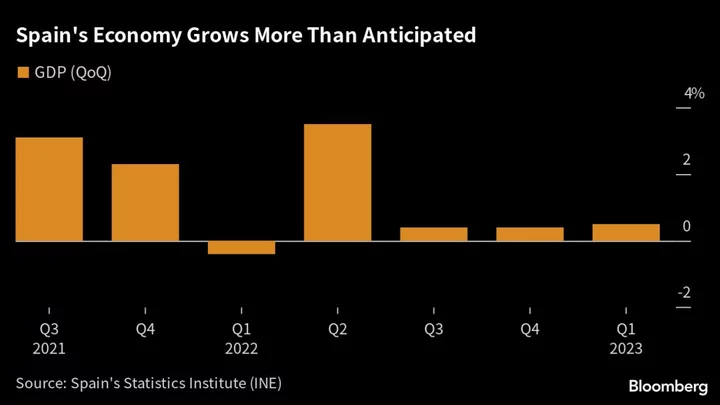Virgin Galactic Holdings Inc. carried its first private tourists to the edge of space, a long-awaited milestone in founder Richard Branson’s quest to build a “spaceline for Earth.”
The VSS Unity craft reached space shortly before 9:30 a.m. local time Thursday, Virgin Galactic said on a livestream of the event, roughly an hour after it took off from a New Mexico spaceport. The tourist mission, which offered passengers several minutes of weightlessness before descending back to solid ground, was the company’s second commercial flight following a recent research operation.
“They are officially astronauts,” Virgin Galactic’s Sirisha Bandla, who provided commentary during the flight, said on the livestream. “Welcome to space.”
The suborbital joyride caps nearly two decades of development work and allows Virgin Galactic to finally begin clearing a backlog of roughly 800 ticket holders who have been waiting for rides to space. Virgin Galactic is competing against Jeff Bezos’ Blue Origin to sell trips to thrill-seekers looking to briefly shed Earth’s gravity, the driving reason the company was first created.
The passengers included 80-year-old Jon Goodwin, a British former Olympian who has Parkinson’s Disease, as well as Keisha Schahaff and Anastatia Mayers, a mother-daughter pair from the Caribbean who won their seats through a charity drawing. They were joined by two pilots and a Virgin Galactic support astronaut.
Virgin Galactic’s shares rose 1.8% to $3.44 as of 11:27 a.m. in New York, paring an earlier gain of as much as 3.8%. The stock was down nearly 3% this year through Wednesday and remains well below the highs of more than $55 in 2021. It was publicly listed through a reverse merger with a special purpose acquisition company, or SPAC, in 2019.
The flight comes a little more than a month after Virgin Galactic finally kicked off commercial spaceflight operations. That first flight, Galactic 01, was strictly a research mission. It included a trio of researchers for the Italian Air Force, who tended to scientific payloads designed to take advantage of the microgravity environment of space.
Read More: The Virgin Galactic Crash and the Risks of Space Tourism
Founded in 2004, Virgin Galactic originally promised to begin flying passengers as early as 2007. In those early days, tickets were sold for $200,000 and then upped to $250,000 while the company experienced delays. In 2014, a Virgin Galactic spaceplane crashed during a test flight, killing one test pilot and seriously injuring another, prompting the company to suspend ticket sales.
Virgin Galactic has experienced successes and failures since then. In 2018, the company reached space for the first time, and it made headlines in 2021 when it flew Branson to space. But after that flight, Virgin Galactic opted to stand down from space missions for nearly two years as it upgraded its vehicle fleet. It reopened ticket sales in 2022, that time for $450,000 a seat.
Loss Leader
Now, the company has a daunting backlog of customers to get through. But even as these passengers start to finally see space, Virgin Galactic says it will be a few years before it sees a profit from its missions.
The primary vehicle the company is flying at the moment is VSS Unity, a spaceplane that was unveiled back in 2016. While Unity will be used to perform monthly space trips, Virgin Galactic is focused on developing a new fleet of space vehicles called the Delta class. These ships, expected to enter operation as late as 2026, will be optimized for easier refurbishment and faster turnarounds between flights, allowing a higher frequency of trips each year.
“There’s a little bit of a loss leader here with Unity,” Mike Moses, president of spaceline missions and safety, said in a June interview. “But it’s important to demonstrate not only that we can do it, but to learn all the lessons to apply.”
Virgin Galactic doesn’t anticipate seeing meaningful revenue for years. The company projects only bringing in roughly $1 million in revenue in each of the last two quarters of the year. That revenue could be slightly higher if a research flight is thrown into the mix, as seats for those missions run around $600,000, the company said.
Virgin Galactic Chief Executive Officer Michael Colglazier told Bloomberg News in June he is confident Virgin Galactic will be able to turn a profit if it can fly Delta on weekly trips to the edge of space.
Though he acknowledges suborbital space tourism will be a “capacity-constrained business” for some time, he hopes that as more private astronauts fly, they will inspire more customers to sign up.
“We need to normalize this industry,” Colglazier said. “It’s not usual for your neighbor to go to space. But as we bring people through, that will become normalized.”
(Updates with details of spaceflight beginning in first paragraph)

